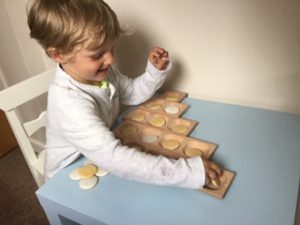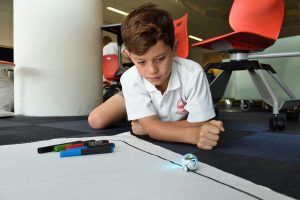
February 14, 2020, by Rupert Knight
The Rights of the Mathematician
In this post Catherine Gripton considers what children should expect of mathematics in school and the implications for how we approach the teaching of mathematics in a way that respects the child as a an autonomous learner.
Our relationship with mathematics
On the 24th October 2019, the UK government launched a consultation on proposed early years foundation stage reforms. Whilst reviewing the proposed programme for mathematics with a group of colleagues, we were struck by the contrast in wording to the proposed programme for literacy. For mathematics there is no mention of ‘love’, ‘enjoyment’ or ‘joy’, only ‘curiosity’ suggesting that mathematics provokes intellectual interest but not an emotional connection. Perhaps this reflects a wider societal conception of mathematics as ‘school mathematics’ without the same relevance to our everyday lives as reading or writing. In this way maths is positioned as something difficult which is to be endured.
This is not the maths that I see in nursery and reception classes. Young children are excited by mathematics. In most early years settings we see children invested in lining up and arranging objects, counting them and making patterns. We see children estimating how far they can jump, counting for fun, making shapes and comparing containers to fill. They do these things, not because someone is making them but because it brings them satisfaction and joy!

The rights of the learner
Children have the right to enjoy or not enjoy particular books and to read for pleasure. They enact similar learning behaviours in mathematics, enjoying using manipulatives, having favourite numbers and activities, enjoying puzzles and problem solving as well as patterns and order. A number of years ago Daniel Pennac’s ‘Rights of the Reader’ was published in English and garnered much interest from teachers, parents and children. The ten rights include the right not to read, to dip in and out, to skip ahead, to read anywhere and to read again (have favourites). The rights promote reader agency where children have the right to read what they would like to, when they would like to, in the way that they would like to. This reassures readers of all ages that they are not less of a reader if they choose not to read a particular book or prefer to read comics or indeed skip ahead. It is empowering to know that you can do something your way, following your interests and generally feel ownership over content and processes. These rights shape our identity and how we perceive ourselves.
In mathematics, we similarly have the right to our own interests, preferences and approaches. It is supportive of strong mathematical identities if we feel that we can use our own methods (including using fingers, and writing things down) and have some mathematical activities or areas that we enjoy more than others. These ‘rights of the mathematician’, as for reading, provide an empowering and inclusive conception of mathematics and mathematicians in the behaviours they portray. Within this notion of mathematics, we, like the children in early years settings, can all be autonomous mathematicians who have the right to ask why, to wonder and to make choices.

The rights of the mathematician
The following are my ten ‘rights of the mathematician’.
1. The right to enjoy mathematics
2. The right to have interests and preferences
3. The right to make jottings, drawings and working out
4. The right to use our own methods and approaches
5. The right to use manipulatives and resources
6. The right to reason, to talk about maths and be listened to
7. The right to make mistakes
8. The right to estimate, to guess and to conjecture
9. The right to ponder and take time
10. The right to be playful
Following Daniel Pennac’s model for readers, these rights are deliberately broad and inclusive to indicate universal entitlement. Respecting these rights in the primary classroom, would include valuing errors (and learning from them), estimates and jottings/working. Such a classroom might take a dialogic approach to mathematics teaching with talk and verbal reasoning important features of mathematics lessons (see this previous blog in the series on a dialogic stance). Similarly, there might be discussions about favourite maths topics and activities and teacher questioning might draw out a range of strategies or children’s own methods for solving a maths problem. Within the environment, we might expect to see maths games and puzzles as well as accessible manipulatives with an emphasis upon the use of resources as a strong mathematical habit (as supportive of meaning making for all).
Maybe you would include other rights or disagree with some of the rights offered here. We would you love to hear your thoughts and comments.
No comments yet, fill out a comment to be the first

Leave a Reply